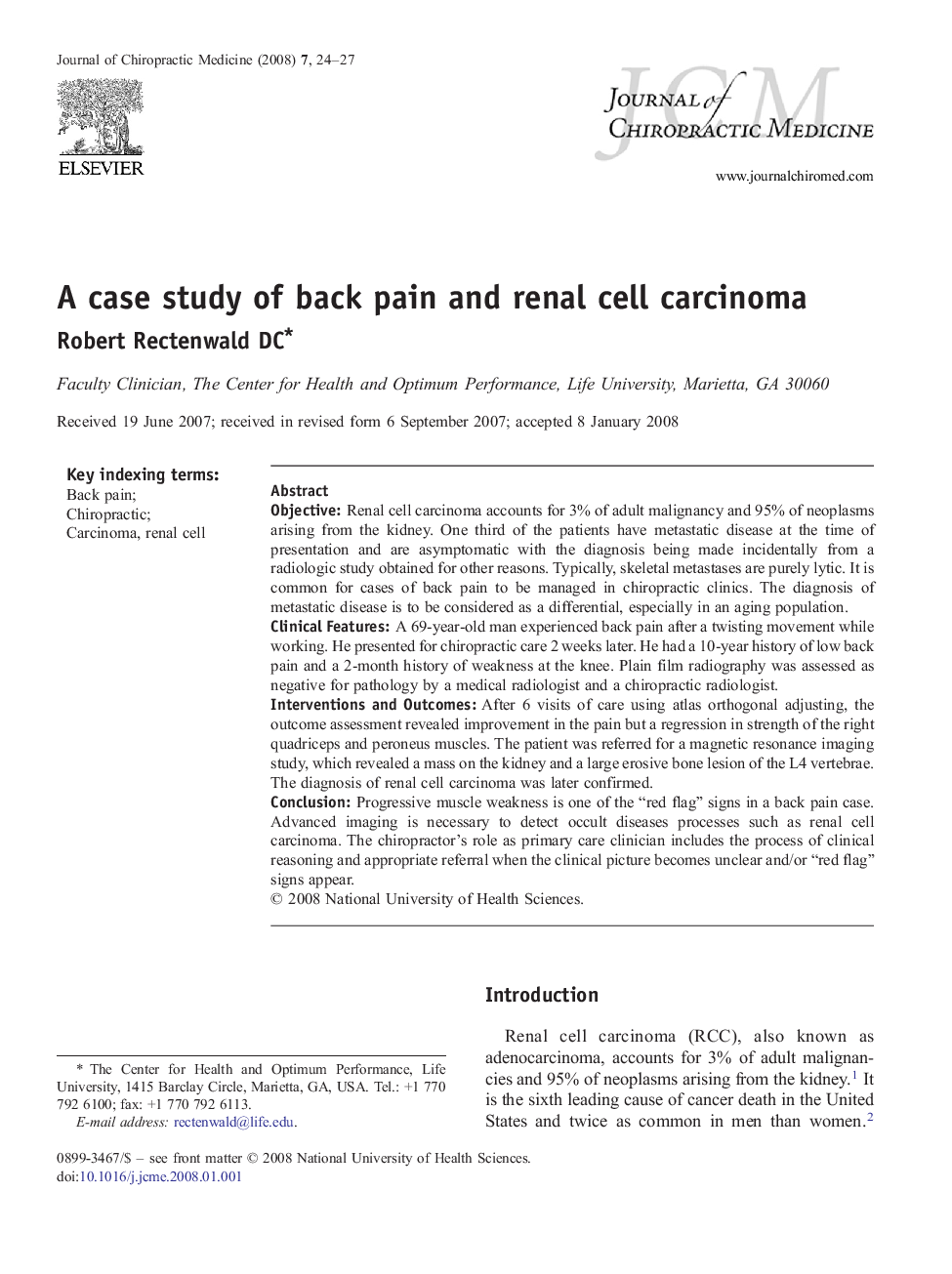| Article ID | Journal | Published Year | Pages | File Type |
|---|---|---|---|---|
| 2620414 | Journal of Chiropractic Medicine | 2008 | 4 Pages |
ObjectiveRenal cell carcinoma accounts for 3% of adult malignancy and 95% of neoplasms arising from the kidney. One third of the patients have metastatic disease at the time of presentation and are asymptomatic with the diagnosis being made incidentally from a radiologic study obtained for other reasons. Typically, skeletal metastases are purely lytic. It is common for cases of back pain to be managed in chiropractic clinics. The diagnosis of metastatic disease is to be considered as a differential, especially in an aging population.Clinical FeaturesA 69-year-old man experienced back pain after a twisting movement while working. He presented for chiropractic care 2 weeks later. He had a 10-year history of low back pain and a 2-month history of weakness at the knee. Plain film radiography was assessed as negative for pathology by a medical radiologist and a chiropractic radiologist.Interventions and OutcomesAfter 6 visits of care using atlas orthogonal adjusting, the outcome assessment revealed improvement in the pain but a regression in strength of the right quadriceps and peroneus muscles. The patient was referred for a magnetic resonance imaging study, which revealed a mass on the kidney and a large erosive bone lesion of the L4 vertebrae. The diagnosis of renal cell carcinoma was later confirmed.ConclusionProgressive muscle weakness is one of the “red flag” signs in a back pain case. Advanced imaging is necessary to detect occult diseases processes such as renal cell carcinoma. The chiropractor's role as primary care clinician includes the process of clinical reasoning and appropriate referral when the clinical picture becomes unclear and/or “red flag” signs appear.
